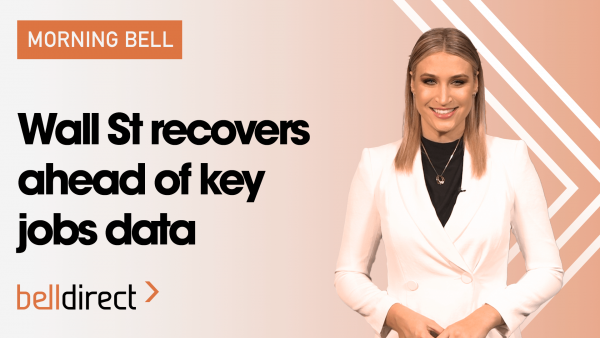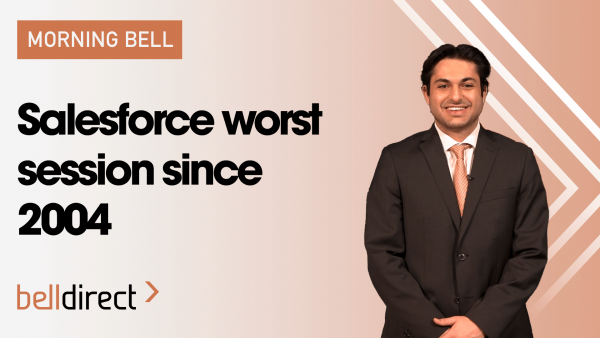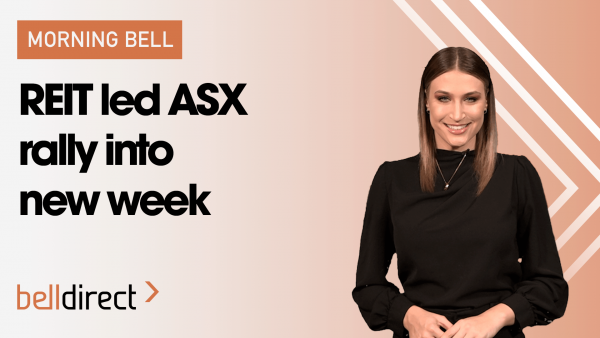6th April 2020
From the helm: BlackRock's Michael McCorry
BlackRock’s Chief Investment Officer, Australia, Michael McCorry paves out what to expect in 2020, from not expecting 20% returns, to tilting towards cyclical stocks that will outperform from the rise of global growth and manufacturing. Plus, what Australians can expect from the May 2020 budget.
Jessica: Hi I’m Jessica Amir, I’m a Market Analyst with Bell Direct and today I’m with Mike McCorry, the Chief Investment Officer of BlackRock in Australia, paving the way for what to expect in 2020. Mike, thanks so much for being here today
Mike: Thanks for having me
Jess: So, 2019 was a record year for Australian equities and U.S markets as well, largely fueled by record low interest rates, so 2020 may look very different so what can we expect Mike?
Mike: If we think about our global outlook first, and then we’ll come to Australia, on a global stage, we see 3 things that investors need to be concerned about. One is, an uptick in global growth, the second thing to talk about is a policy pause, and the third is, thinking about what resilience means in a portfolio in a record low interest rate environment
So, we start with the first one. If we think about growth edging up, particularly fueled by the U.S, we’ve got a strong tail wind coming from low interest rates. A very strong household sector, meaning consumer spending is really strong in driving the economy. But we’re seeing a pickup in manufacturing, and broad financial conditions are favorable for growth. So, don’t want to shy away from trade tensions, and a potential presidential impeachment, as noise to that background. But we do see growth picking up globally. That has us positioned in a positive way towards equities globally.
The second key thematic is, global central banks are tending to pause on interest rate cuts. If we look at the U.S in particular, we don’t see any rate hikes, or rate cuts in 2020. Maybe the next one will be out in 2021. So, with that pause, and with the longer sustained low interest rates, we think that will help drive further growth in the global economy. We’ll come to Australia in a little bit, because it is quite different there.
The third thing we have been talking to our clients about is resilience. What does that mean in a portfolio? Historically we have this negative correlation between stocks and bonds, and bonds have been a nice buffer in a portfolio with the stocks. As interest rates have come down down down, if you look at Europe, there’s a lot of negative yielding interest rates that come from a bond. We have to step back and question, are those bonds going to provide the buffer we could have expected historically? Going forward, are we still going to see resilience buffering coming from those government bonds in the past. So that’s something to think about on the global stage.
So those are three thematics we are engaging our clients on
Jess: So, you mention manufacturing picking up, plus we’re also likely to see a possible end to the trade war, so when it comes to investing in 2020, how do you see investors should be tilting their portfolios?
Mike: On the global stage, there’s three main areas we’re looking at. An overweight position in global equities, an overweight position in credit, or corporate bonds, and a neutral position in government bonds in the portfolios. Why are we overweight in equities? We talked about the easing that has come from central banks. It means the cost of capital has come down, that has helped fuel growth. In 2019, we saw some pretty big returns. But if we look at valuation, its still pretty reasonable. Its not overly expensive, so we’re not too concerned on that front.
If we think about the growth uptick, what that means to us is that we’re really looking at forward earnings. That’s what we need to see. As long as we’re seeing that forward earnings growth, which we really expect in the U.S, we think there’ll be a little bit of an uptick in Europe, that is quite positive. In this growing environment, we like things that are pro-cyclical. By that we mean, things that benefit from low unstable rates, and a growth in forward earnings, so things like Japanese equities, or emerging markets are two of the positions that we like in the portfolios.
Jess: So, you’ve highlighted that 2020 will be favourable on a global front, but bringing it back to Australia, consensus is that rates will be cut two more times in 2020, but what’s your outlook for Australia in 2020
Mike: I think that’s a really important point of differentiation you just made there. If we think about the U.S, it’s stable. We don’t see any rate hikes or rate cuts in 2020, but we’re seeing one to two in Australia. One in Q1, and the second one in the back half of next year. But what’s different about Australia is that the consumer sector is not spending like the U.S. The U.S is retail, consumer lead, really driving the growth… we’re not seeing that. We have a much higher debt load in Australia. Consumers are paying off debt, they’re not spending as much, and that’s not driving the economy as well. House prices have started to tick up. We’ll be watching that to see if that continues. Unemployment, we are hoping to see a bit of wage growth, but it’s pretty benign there and the employment rate is pretty stable. So those are things for us to watch as we move into the new year. And hopefully a shift between part time and full time, we’d like to see that full time number picking up a bit more.
Monetary policy is interesting, but how much more can it do? It’s kind of run its course, if we get these additional cuts which we think will help, reducing the cost of capital helps equities, but we’re really looking for the fiscal side. What’s the government going to do? Is there going to be injection capital? Are we going to see more infrastructure spending? So, we’re really looking for that May 2020 budget, to see what are they putting in there, what sort of spending is going to come out of that budget. And a final thing that we’re looking at is the tax cuts. A lot of them aren’t going to kick in until 2024. We’d like to see some of that brought forward -if it did, it would be a really nice tail wind for the economy and help out quite a bit
Jess: Thanks Mike, and that ties in perfectly to my last question, one that investors have been waiting for. When it comes to Australian investing, what can we expect for markets in 2020?
Mike: The first thing I’d say is, 2019 has been a fantastic year. We’ve seen fixed income markets, bond markets up into double digits. We’ve seen equity markets, high teens, 20% range. That is not our core position for 2020. Still positive, but we don’t think its going to be nearly as strong. If we think about the economic environment for Australia, we talked about the tail winds, really looking for that earnings growth. 4-4.5% forward looking earnings growth. If we can get that in the slow rate environment, that has the low costs of capital for companies, that should see us with mid to high single digits in Australian equities, and we’re positive, for overweight Australian equities.
One of the things we’re watching is the Australian dollar, being a small economy, it has a lot of offshore investment. These companies have money coming back to Australia. The A dollar matters, and we see that holding pretty steady. It’s been interesting with commodity prices having an upward push on the Australian dollar, but the low interest rate differentials putting a downward pressure on it, its been pretty stable and we think it will probably stay in that 65-70 range over the coming year. So, when we’re looking at equity markets, we’re mildly positive on equities this year. If we think about what does that mean, we talked a little bit about the pro-cyclical environment globally, we like that as well. Things like mining, services, and contractors, are interesting plays.
Another area we’re interested in is technology. The growing tech sector. But we have to be careful, because some technology is already very expensive, its been bit up, its forward earnings are going to struggle to match the expectations, so looking at pricing power, do the tech companies have good market positioning, do they have pricing power? That’s important.
The final point I’d make is around healthcare. With an ageing demographic, healthcare in this country is going to be very important. Looking at companies that can service that well, and do it from a point of valuing differentiation will be important.
Jess: Well thank you so much for your time and your insights, Mike McCorry, the CIO of BlackRock Australia
Mike: Thank you it’s been a pleasure


-min_600_338.png)


_600_338.png)


_600_338.png)



-min_600_338.png)